The incredible effort that went into the preparations for the D-Day landings is staggering.
The monumental logistics required to put the men and equipment on a hostile beach in France are often overlooked.
The Germans also intercepted enough radio transmissions to confirm that something significant was going on in the area.
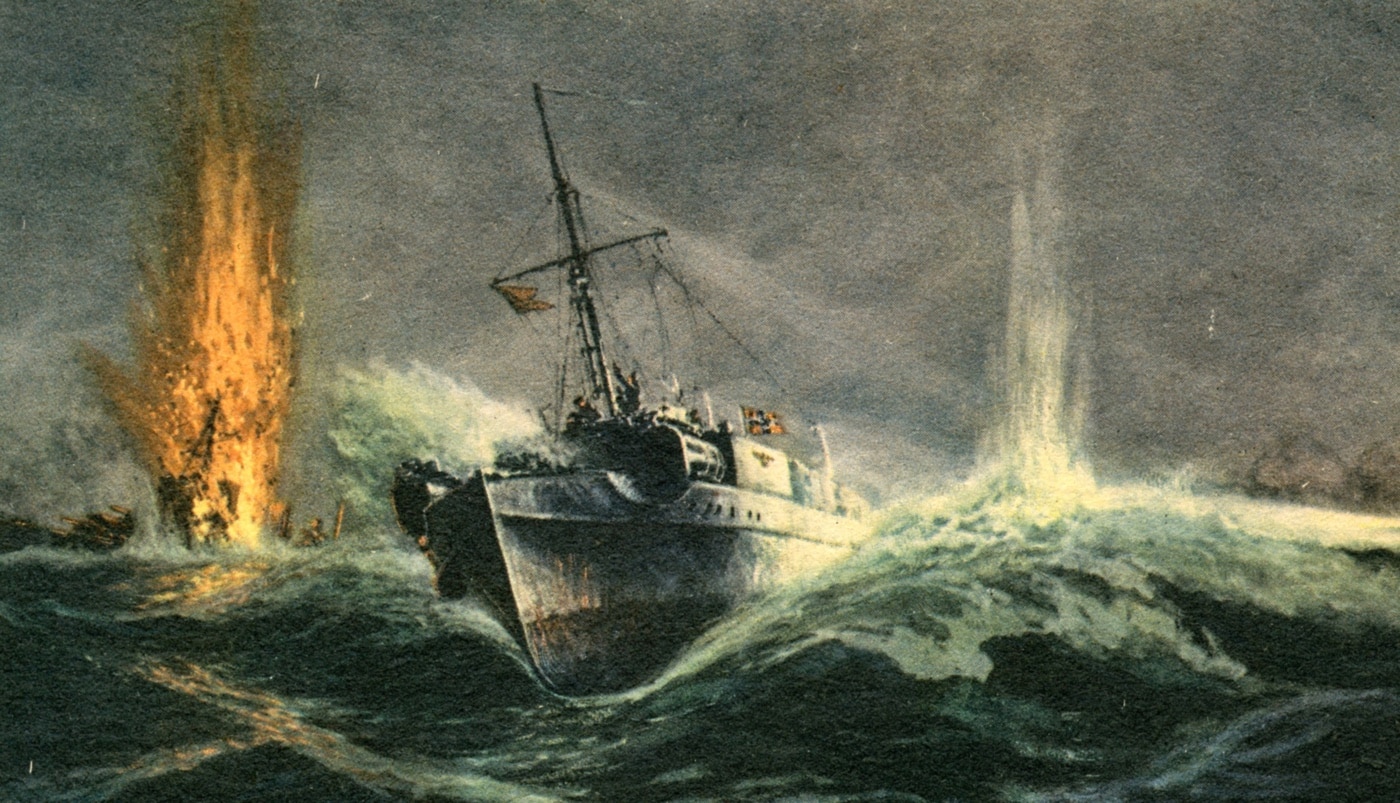
Kriegsmarine postcard of a slashing, high-speed torpedo attack by Schnellboat (aka S-boot or E-boat.) They were a deadly wrinkle in Exercise Tiger. Image: Author’s collection
Unfortunately, the escorts were quickly reduced by half as the Scimitar collided with an American LST outside Portsmouth.
There were several men aboard the convoy who knew the timing and plans for Operation Overlord.
The E-boats were also spotted at a distance by lookouts on the LSTs.
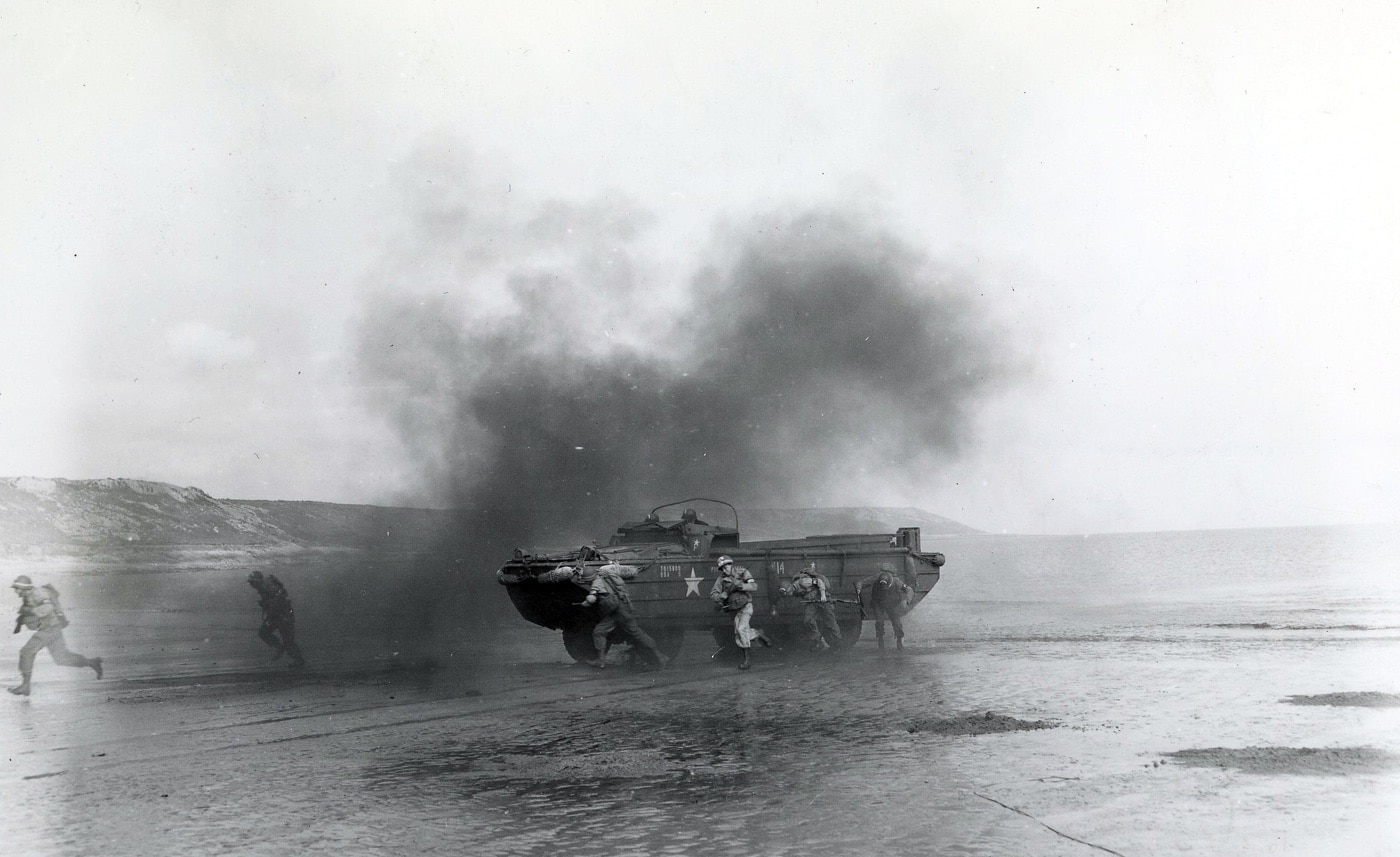
A DUKW amphibious truck and its soldiers come under simulated fire on the beach during Exercise Tiger. Image: NARA
A little later, British coastal gun crews spotted the German boats but held their fire.
The destroyer Azalea was told, but did nothing.
Green troops ready for amphibious training were not properly prepared to abandon a burning ship.
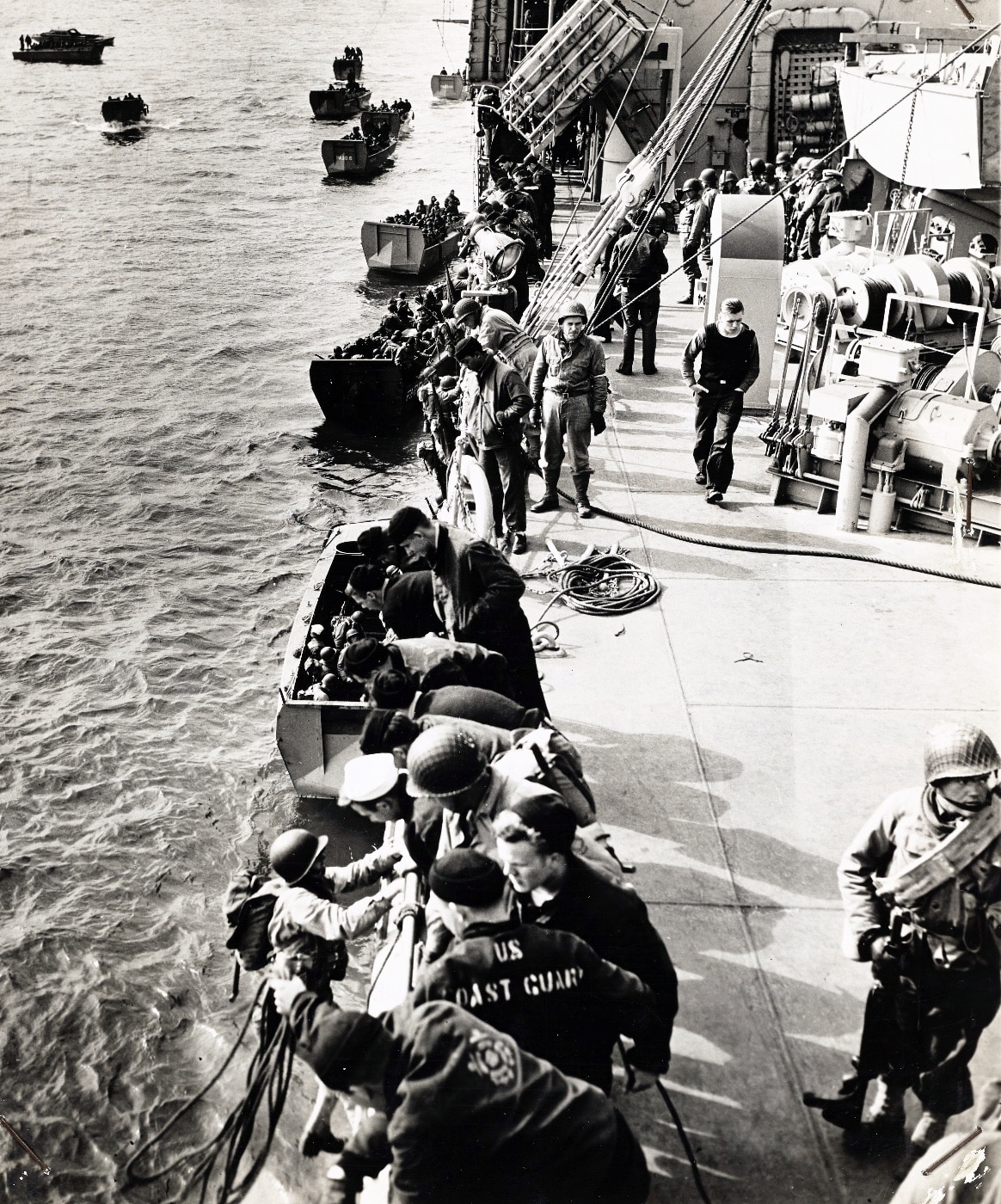
Men of the U.S. Coast Guard help soldiers over side and into the landing craft for a invasion exercise near Slapton Sands. Image: NARA
About 45 minutes later, LST-531 exploded and sank within 10 minutes, with 467 men dying with her.
Shortly after, LST-489 was hit, losing her rudder and sustaining significant casualties.
Nearly 1,000 Casualties
In all, four LSTs bore the brunt during the attack.
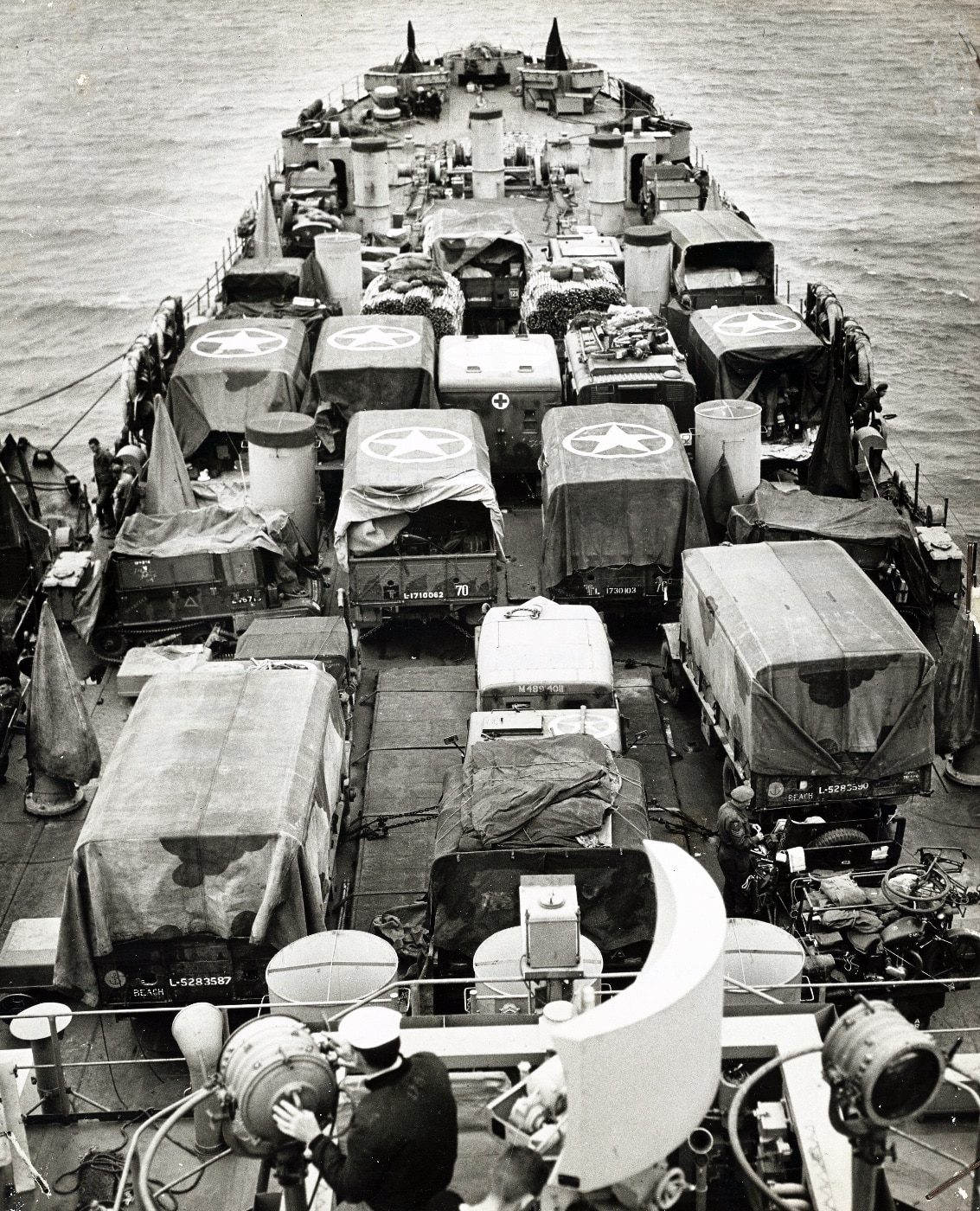
For full realism in Exercise Tiger, the vehicles loaded on the transport ships were fully fueled. This would only add to the carnage when the German E-boats struck. Image: NARA
LST-289 was torpedoed and damaged, but returned to port.
LST-507 was torpedoed and sunk.
LST-511 was damaged by friendly fire, but returned to port.
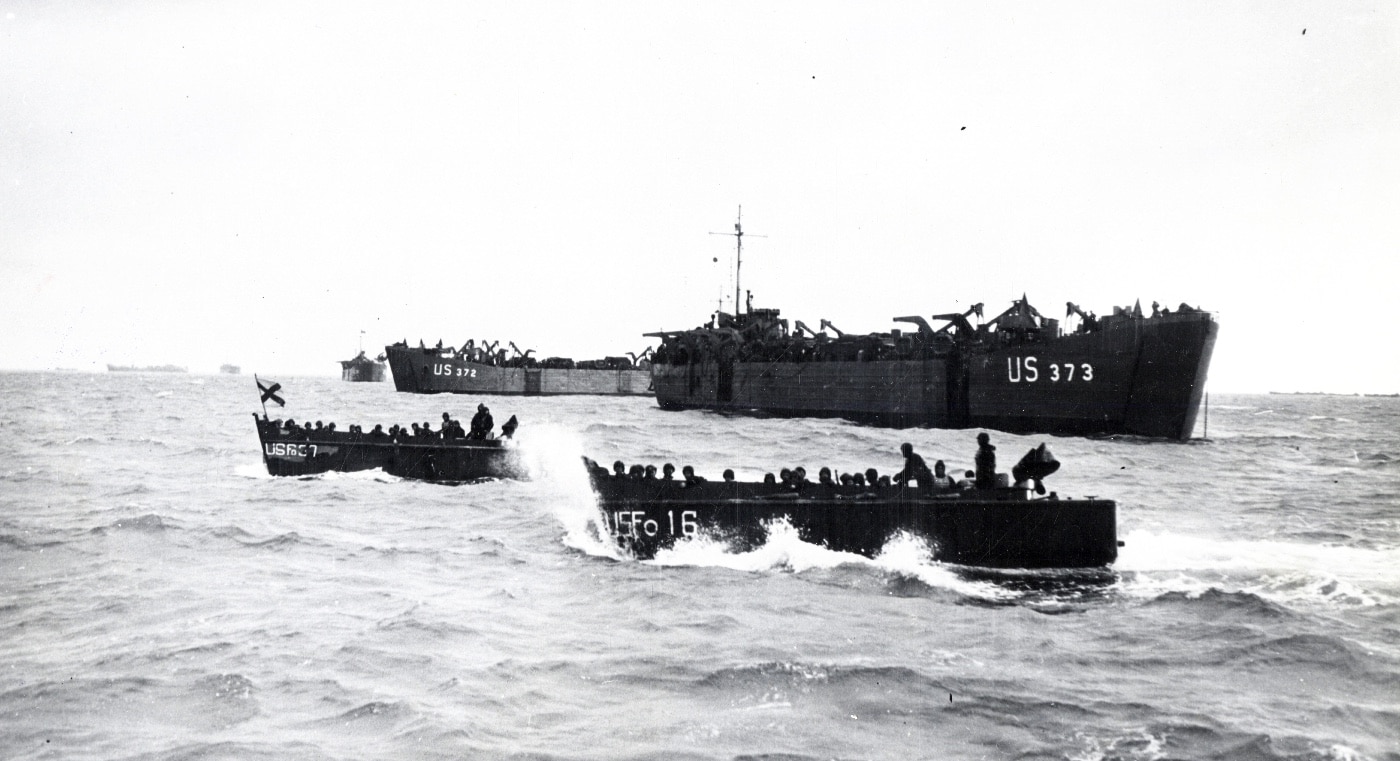
Just off the shores of Slapton Sands, the Higgins boats begin their runs to the beach during Exercise Tiger. Image: NARA
LST-531 was torpedoed and sunk.
The cost was incredibly high, and the six boats of the 5thS-Boot Flotilla got away cleanly.
Communications between U.S. Navy and Royal Navy were standardized.
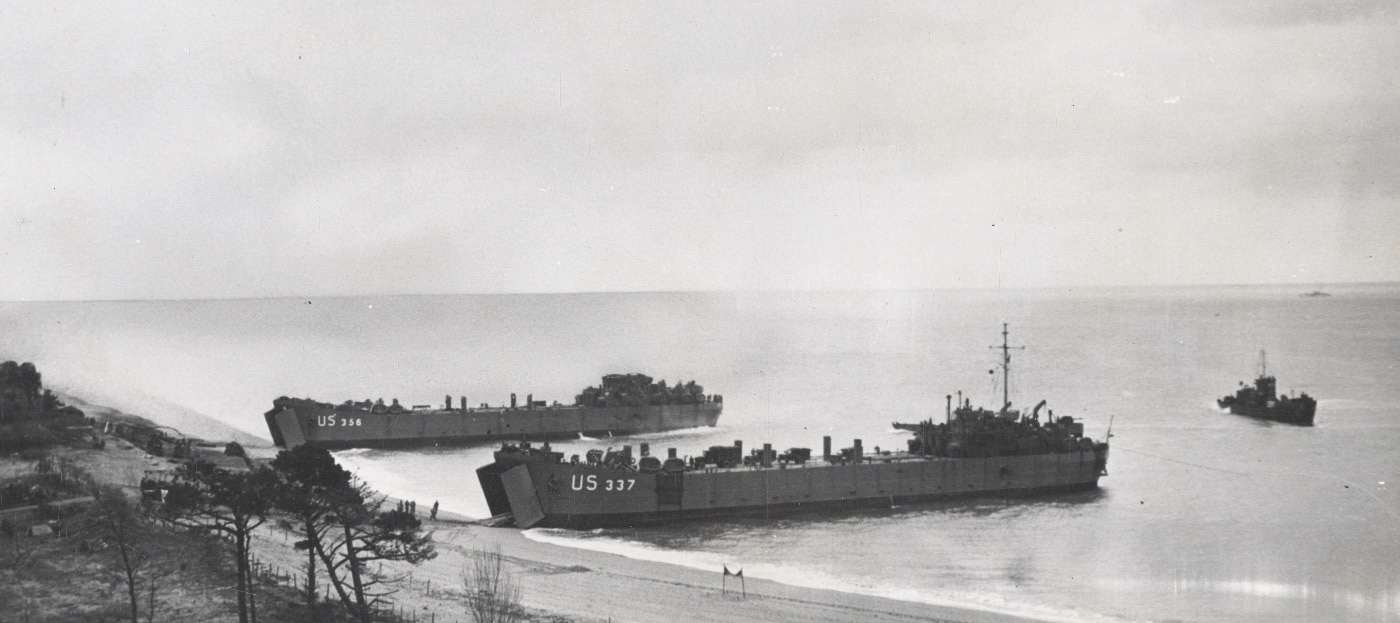
Massive landing crafts deliver vehicles to the beach during Exercise Tiger in 1944. Image: NARA
The infantrymen headed to the beach were given more complete training in the use of lifejackets.
It was a small change, but one that certainly had a positive effect on morale.
A group of light boats were also detailed to pick up survivors of sunken ships during the landings.
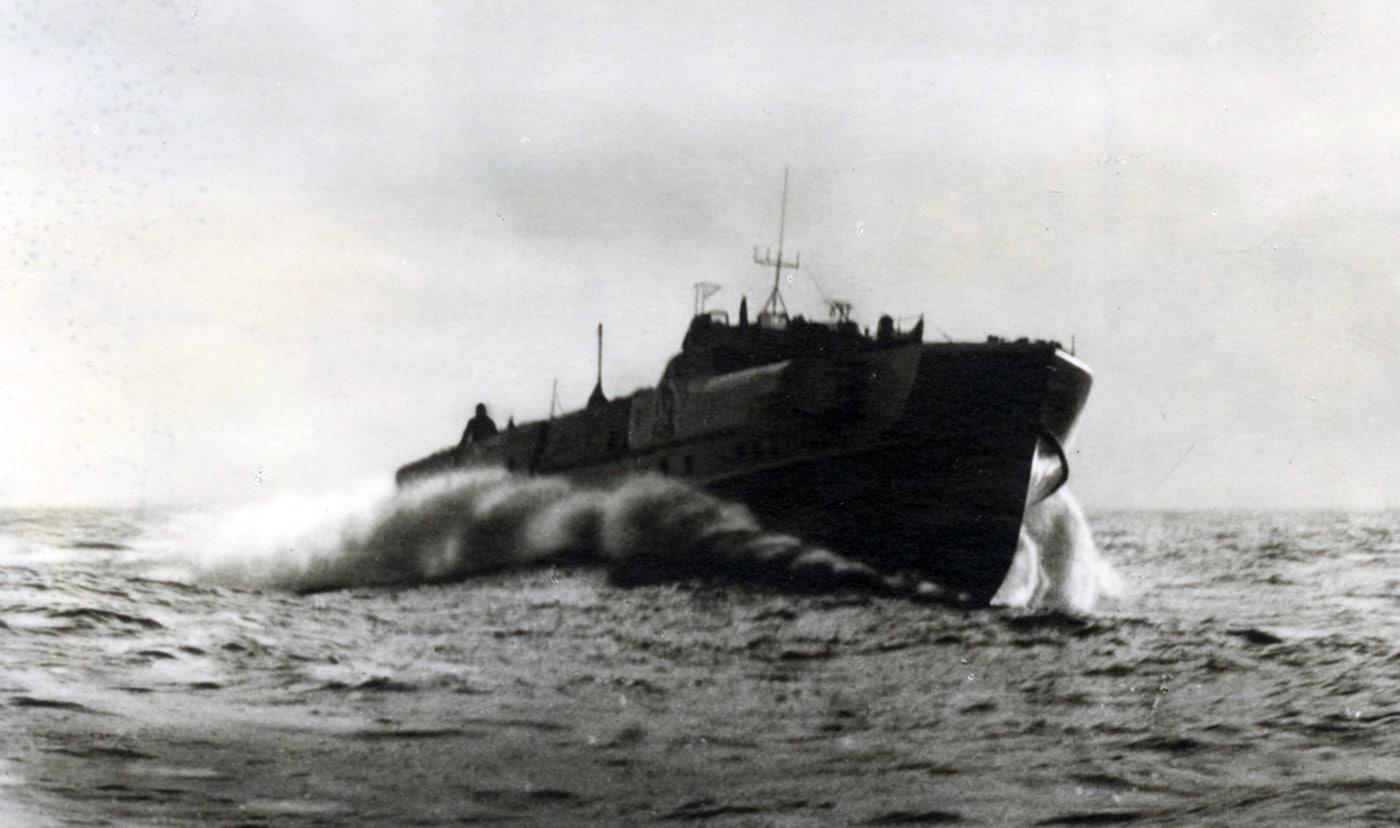
The German E-boats could reach up to 48 knots during attack runs. The E-boat was a name given by the Allies, while Germany called them “S-boot” or “Schnellboot”. Image: Author’s collection
Most importantly, there was a renewed focus on fighting off German coastal forces, particularly the deadly S-Boots.
The development of S-Boot tactics therefore follows the same path as U-boat tactics.
In the Channel, the boats are used now only in packs.
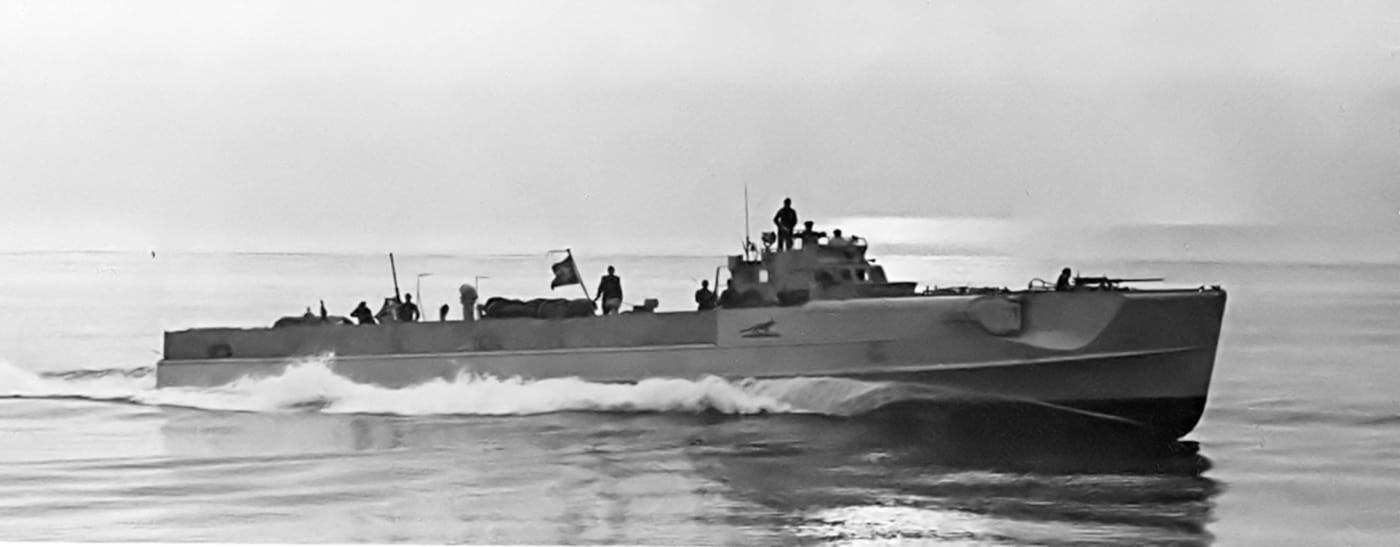
Sleek and deadly, the E-boats caught the practice-invasion convoy by surprise. Author’s collection
By 1944, the S-Boots carried progressively heavier armament.
G7a torpedoes were carried throughout the war.
On mining missions, the torpedoes were replaced by six mines.
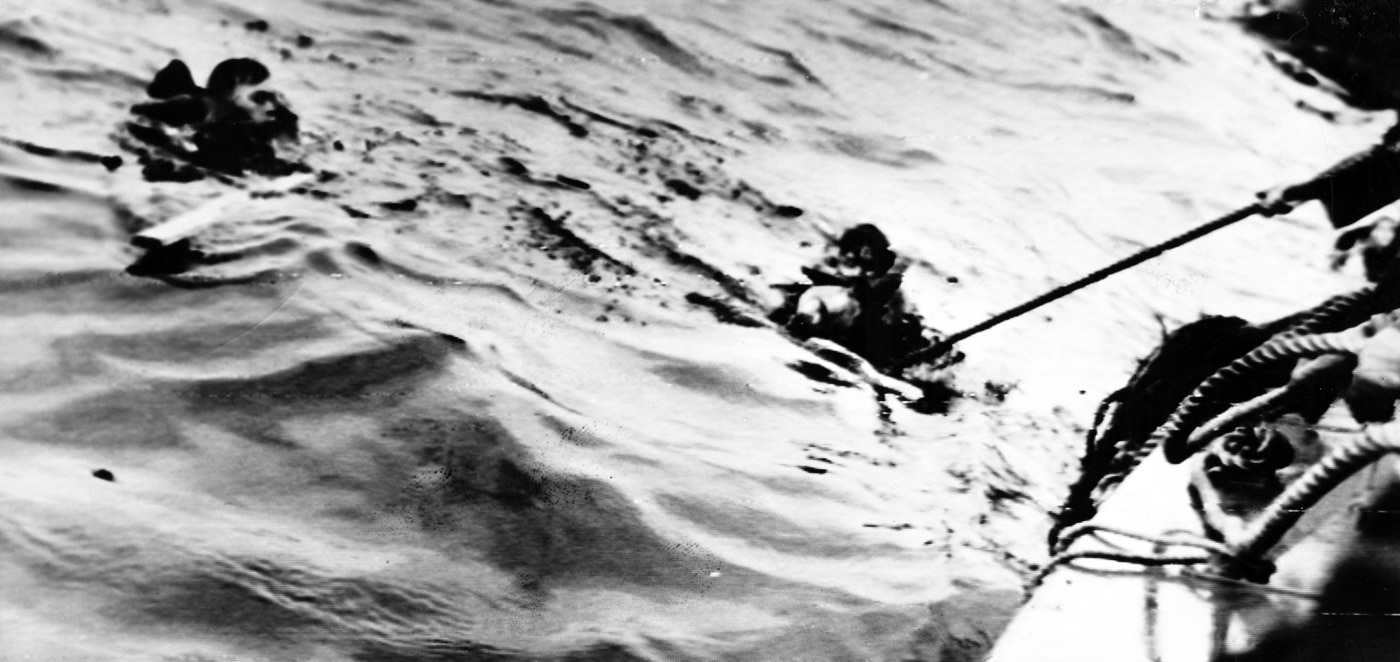
Hundreds of men went into the waters of Lyme Bay after the S-boot attacks. Nearly 1,000 men were killed or wounded. Many drowned or succumbed to hypothermia waiting to be rescued. Image: NARA
Their range was excellent up to about 850 miles.
Prior to the invasion there was often a crippling lack of cooperation between the Wehrmacht, Kriegsmarine and Luftwaffe.
At 0130 gunfire was observed directed at (LST) 507, about 600 yards astern of us.
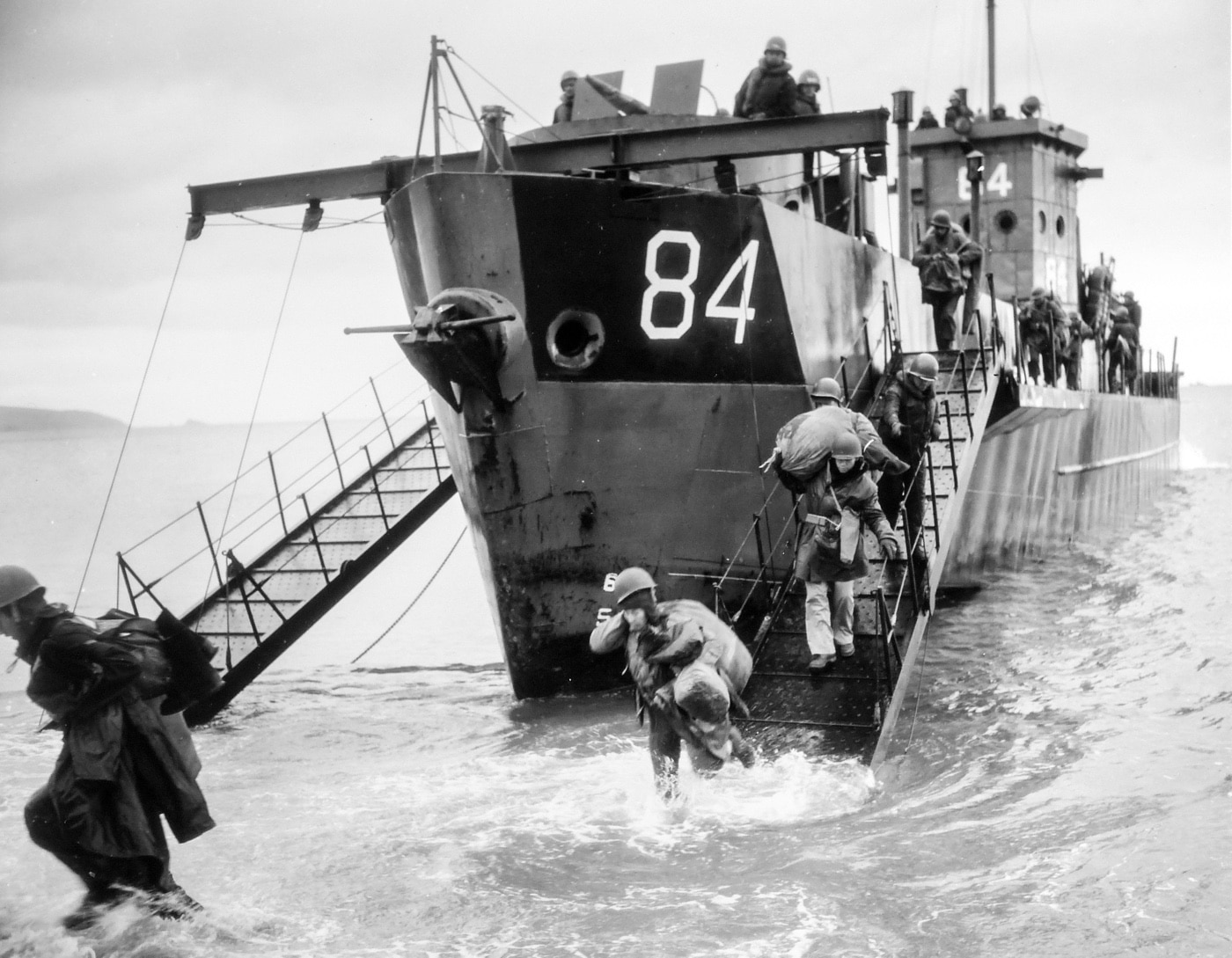
Infantry trudges ashore on a seemingly uncontested beach at Slapton Sands. Out in Lyme Bay, it was a very different story. Image: NARA
The firing lasted about 10 minutes and we received no hits out of two or three hundred rounds fired.
Shortly after the firing ceased the 507 came back into formation about 700 yards astern of us.
It didnt look to be a full-sized torpedo and it was quite close to the surface.
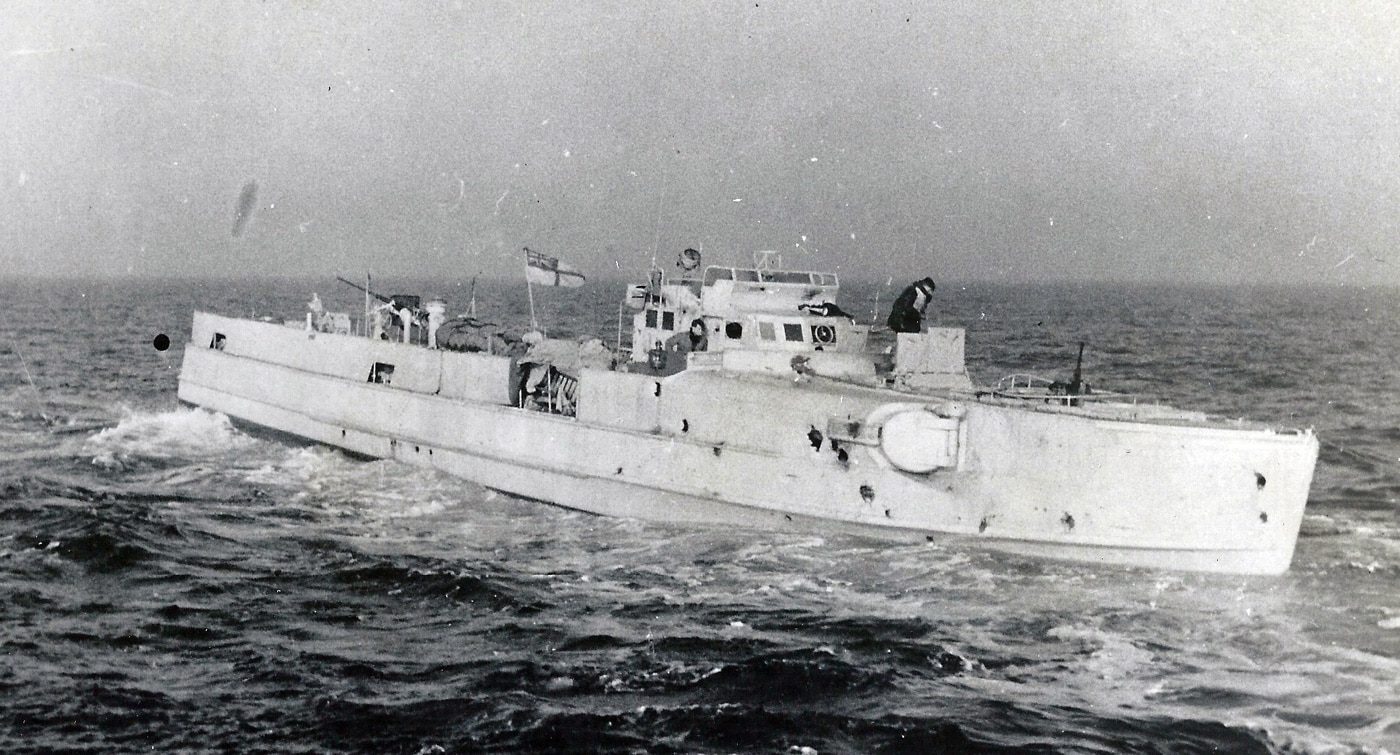
An S-Boot damaged and captured by the Royal Navy. Note the bow-mounted 20mm Flak. Image: NARA
It struck sufficiently high that the screws were not damaged.
The engine room watch calmly got the engines started after the explosion.
The repair parties were phenomenal in their control of the fire.
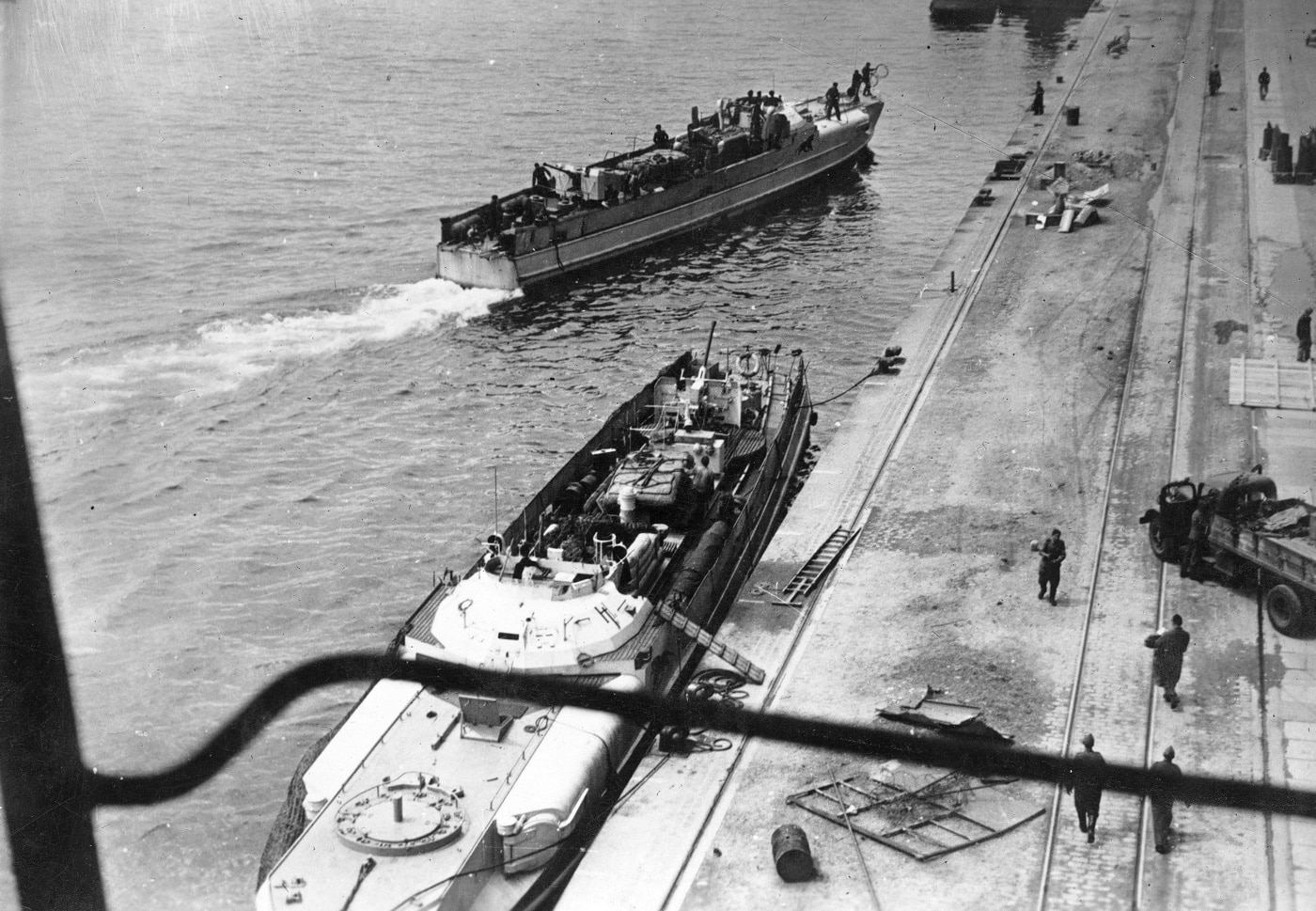
Beginning on the night of June 14, 1944, RAF heavy bombers pounded the S-Boots Channel bases. Many boats were sunk and several irreplaceable commanders were killed. Polish National Archives
The small boat crews held up under hours of grueling seamanship.
The line-handling parties worked to the point of exhaustion tending the towing lines.
The medical corpsmen searched for hours through the hazardous wreckage for the injured.
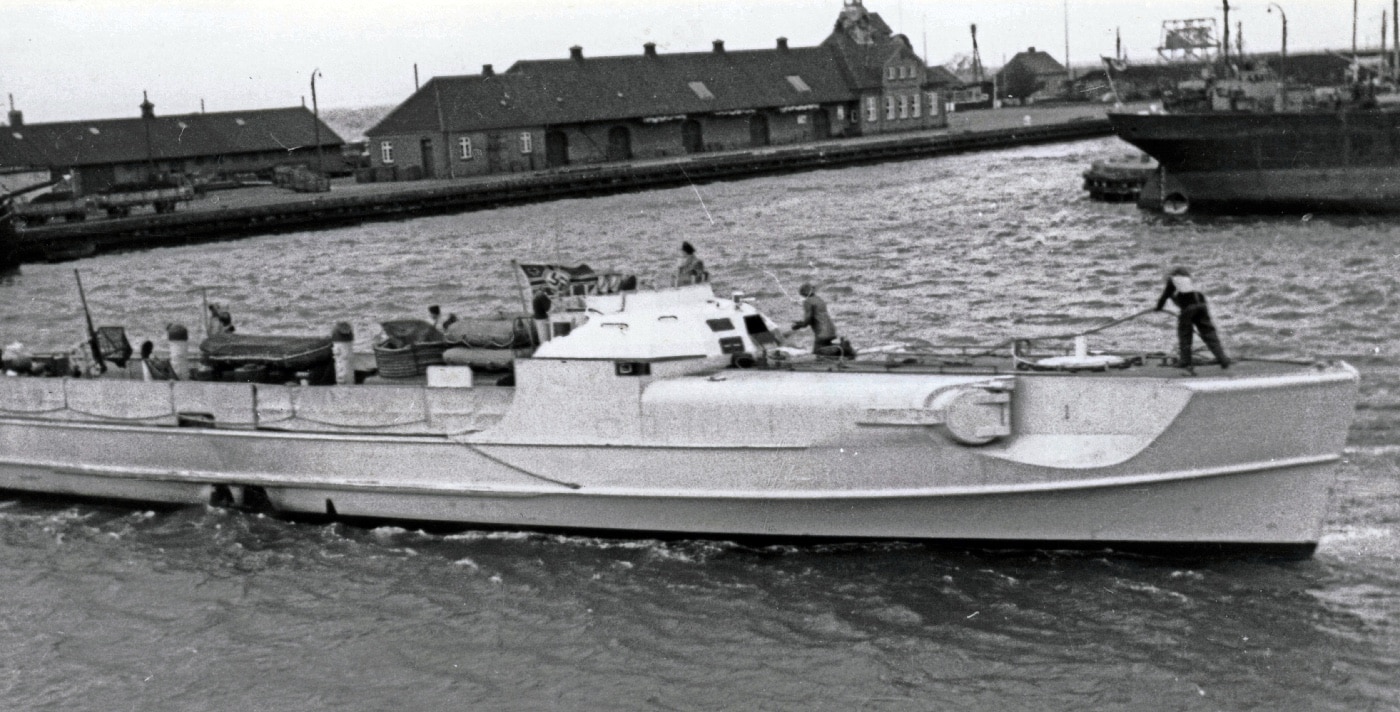
The S-Boots operated in the English Channel, the North Sea, the Baltic Sea, the Adriatic Sea, the Aegean Sea, the Black Sea and in the Mediterranean Sea. Image: Danish Bornholms Museum
The gunners mates crawled throughout the ship in darkness scattered 40mm shells.
Every officer was an example to the men in their cool execution of duty.
There wasnt a man who had a physical or nervous breakdown.
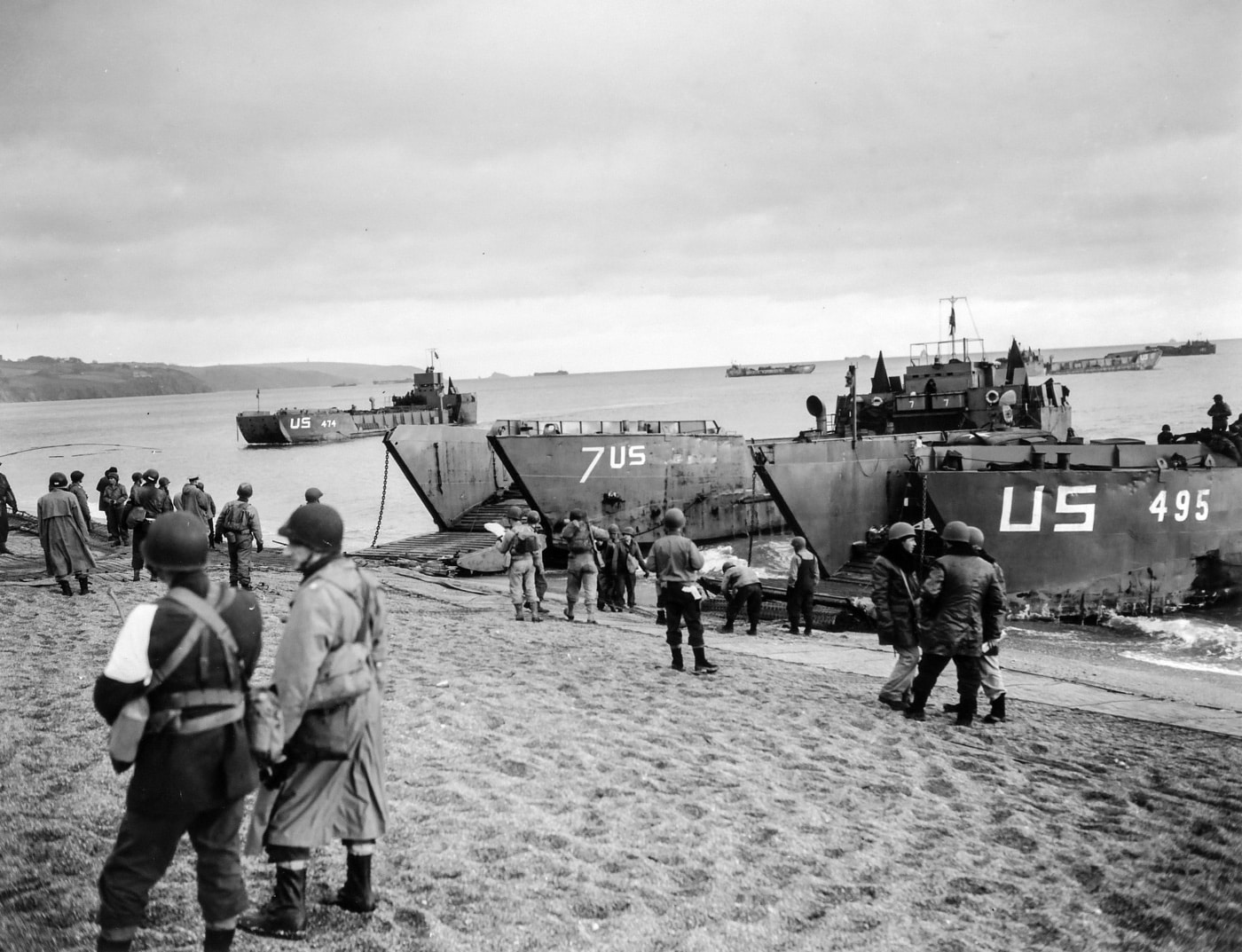
Shown here are Allied troops on the beach during Exercise Tiger. The exercise was intended to be a dress rehearsal for the Normandy landings that would take place in June 1944. Image: NARA
I am proud of the privilege of being their commanding officer.
Lt. Harry A. Mettler, U.S. Navy Reserve
Go to forum thread




